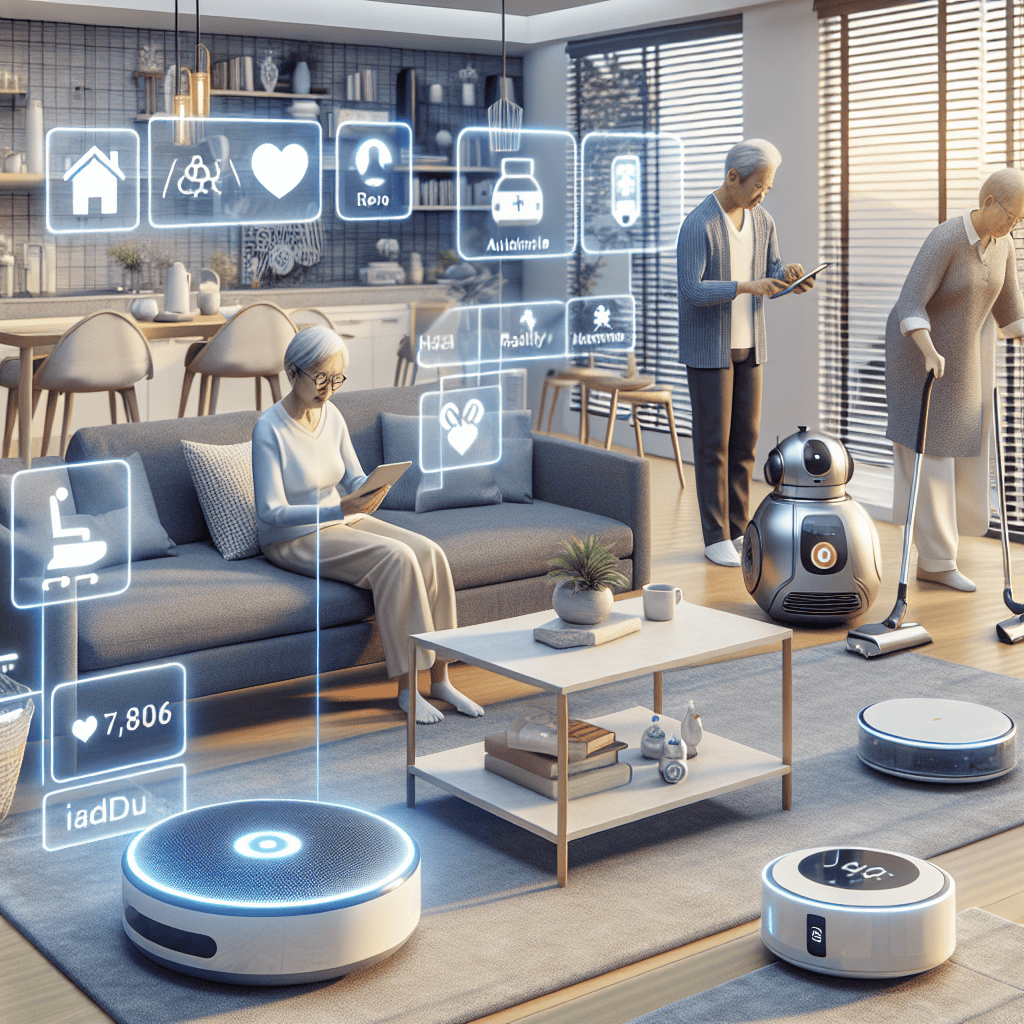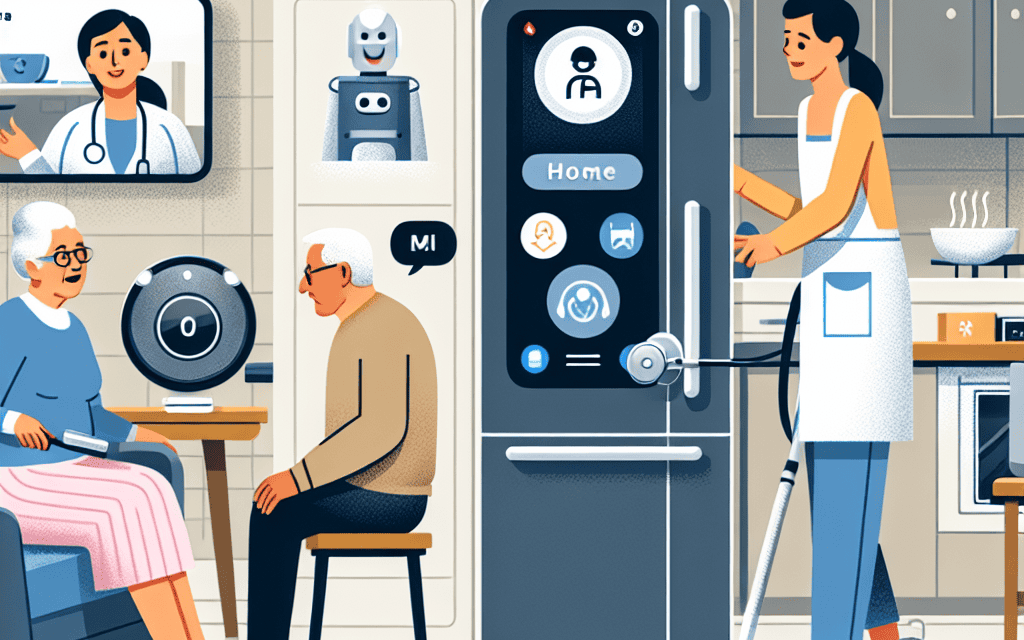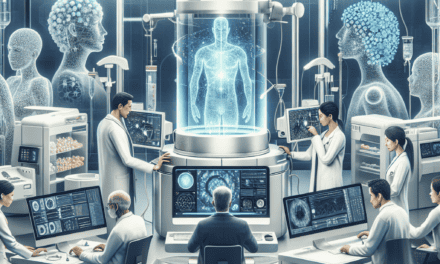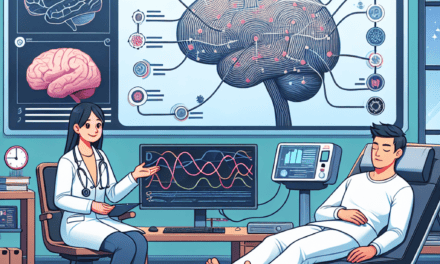-
Table of Contents
- Home Health Care: Technologies Enabling Aging in Place
- 1. Smart Home Devices and Automation
- 1.1 Voice-Activated Assistants
- 1.2 Smart Lighting and Thermostats
- 2. Telehealth and Remote Monitoring
- 2.1 Virtual Consultations
- 2.2 Remote Health Monitoring
- 3. Assistive Technologies and Mobility Aids
- 3.1 Mobility Aids
- 3.2 Robotic Assistants
- 4. Safety and Security Technologies
- 4.1 Fall Detection Systems
Home Health Care: Technologies Enabling Aging in Place

As the global population ages, the demand for innovative solutions that allow seniors to age in place has never been more critical. Home health care technologies are at the forefront of this movement, providing the elderly with the tools they need to maintain independence, safety, and quality of life in their own homes. This article explores the various technologies that are transforming home health care, enabling seniors to live comfortably and securely in familiar surroundings.
1. Smart Home Devices and Automation
Smart home devices and automation systems are revolutionizing the way seniors manage their daily lives. These technologies offer convenience, safety, and peace of mind, making them an essential component of aging in place strategies.
1.1 Voice-Activated Assistants
Voice-activated assistants like Amazon Alexa, Google Assistant, and Apple Siri have become household staples, offering hands-free control over various smart home devices. For seniors, these assistants can be invaluable, providing easy access to information, reminders, and emergency assistance.
- Voice commands can control lighting, thermostats, and security systems, reducing the need for physical interaction with devices.
- Assistants can set medication reminders, ensuring seniors adhere to their prescribed schedules.
- In case of emergencies, voice-activated assistants can contact family members or emergency services.
Case studies have shown that seniors using voice-activated assistants report increased feelings of safety and independence, as they can manage their environment without relying on others.
1.2 Smart Lighting and Thermostats
Smart lighting and thermostats offer seniors greater control over their home environment, enhancing comfort and safety. These devices can be programmed to adjust automatically based on time of day or occupancy, reducing energy consumption and minimizing fall risks.
- Motion-activated lighting can illuminate pathways at night, preventing falls.
- Smart thermostats learn user preferences and adjust temperatures accordingly, ensuring optimal comfort.
- Remote access allows family members to monitor and adjust settings from afar, providing additional oversight.
Research indicates that smart home technologies can significantly reduce the risk of accidents and improve overall well-being for seniors living independently.
2. Telehealth and Remote Monitoring
Telehealth and remote monitoring technologies are transforming the delivery of health care services, making it easier for seniors to receive medical attention without leaving their homes. These innovations are particularly beneficial for those with chronic conditions or mobility challenges.
2.1 Virtual Consultations
Virtual consultations have become increasingly popular, especially in the wake of the COVID-19 pandemic. These online appointments allow seniors to connect with healthcare providers from the comfort of their homes, reducing the need for travel and exposure to potential health risks.
- Telehealth platforms offer video, audio, and chat options for consultations, catering to different comfort levels and technological capabilities.
- Providers can assess symptoms, prescribe medications, and offer medical advice remotely.
- Virtual consultations can be scheduled more flexibly, accommodating seniors’ unique needs and schedules.
Studies have shown that telehealth can improve access to care, reduce hospital readmissions, and enhance patient satisfaction among seniors.
2.2 Remote Health Monitoring
Remote health monitoring devices enable continuous tracking of vital signs and health metrics, providing real-time data to healthcare providers. This technology is particularly beneficial for managing chronic conditions such as diabetes, hypertension, and heart disease.
- Wearable devices can monitor heart rate, blood pressure, and glucose levels, alerting providers to potential issues.
- Data is transmitted securely to healthcare teams, allowing for timely interventions and adjustments to treatment plans.
- Family members can also access monitoring data, offering additional support and oversight.
Research indicates that remote monitoring can lead to better health outcomes, reduced emergency room visits, and increased patient engagement in their own care.
3. Assistive Technologies and Mobility Aids
Assistive technologies and mobility aids play a crucial role in helping seniors maintain independence and mobility. These devices range from simple tools to advanced robotics, each designed to address specific challenges faced by the elderly.
3.1 Mobility Aids
Mobility aids such as walkers, canes, and wheelchairs are essential for seniors with mobility impairments. Recent advancements have led to the development of more ergonomic and user-friendly designs, enhancing comfort and usability.
- Lightweight materials and foldable designs make mobility aids easier to transport and store.
- Adjustable features allow for customization, ensuring a better fit and improved support.
- Innovative designs, such as rollators with built-in seats, offer additional functionality and convenience.
Studies have shown that appropriate use of mobility aids can significantly reduce the risk of falls and improve overall quality of life for seniors.
3.2 Robotic Assistants
Robotic assistants are an emerging technology in the field of home health care, offering support with daily tasks and companionship. These robots can perform a variety of functions, from fetching items to providing reminders and social interaction.
- Robots like Jibo and Pepper can engage in conversation, offering companionship and reducing feelings of loneliness.
- Assistive robots can help with household chores, such as vacuuming or fetching items, reducing physical strain on seniors.
- Some robots are equipped with sensors and cameras, allowing for remote monitoring and emergency response capabilities.
Case studies have demonstrated that robotic assistants can enhance the quality of life for seniors, providing both practical support and emotional comfort.
4. Safety and Security Technologies
Ensuring the safety and security of seniors living independently is a top priority. A range of technologies has been developed to address these concerns, offering protection against accidents, intrusions, and other potential threats.
4.1 Fall Detection Systems
Falls are a leading cause of injury among seniors, making fall detection systems a critical component of home health care. These systems use sensors and algorithms to detect falls and alert caregivers or emergency services.
- Wearable devices, such as pendants or wristbands, can detect sudden movements indicative of a fall.
- Smart home sensors can monitor movement patterns and identify anomalies that may indicate a fall.
- Some systems offer automatic emergency response, contacting help without the need for user intervention.
Research shows that fall detection systems can significantly reduce response times and improve outcomes for seniors who experience falls.
<h





